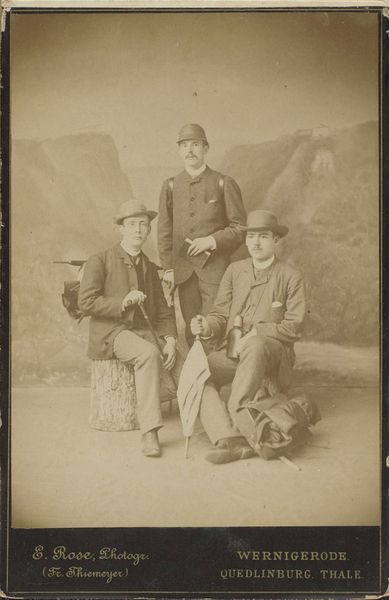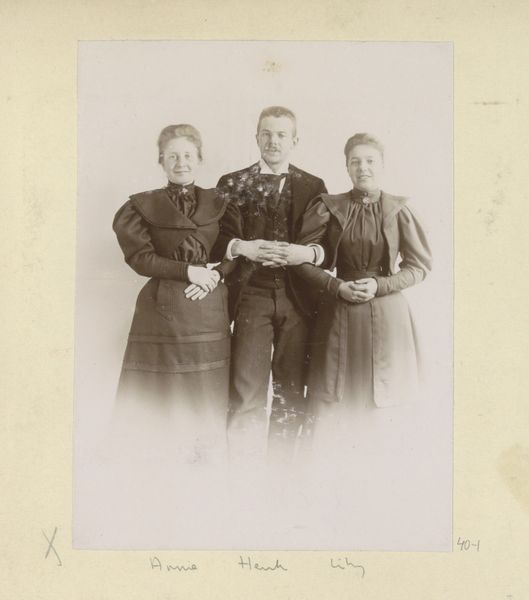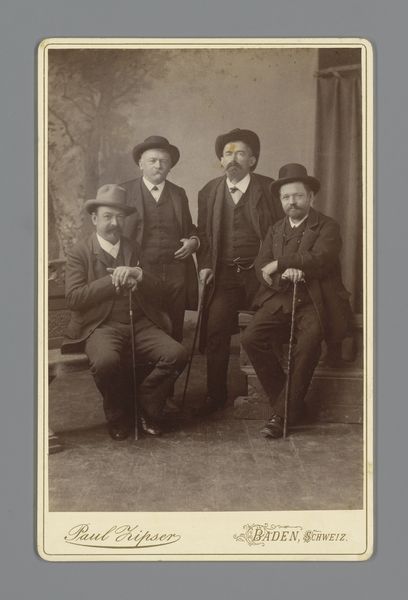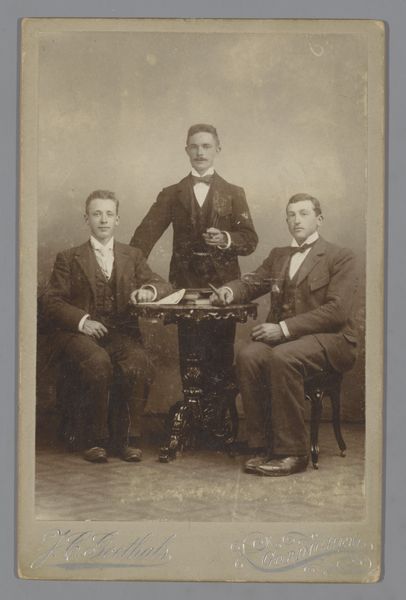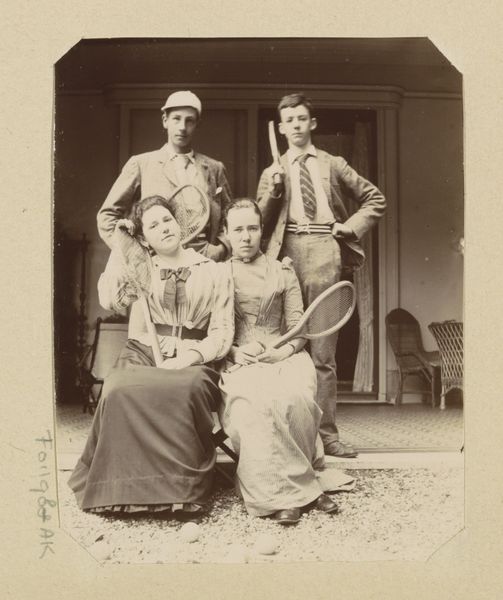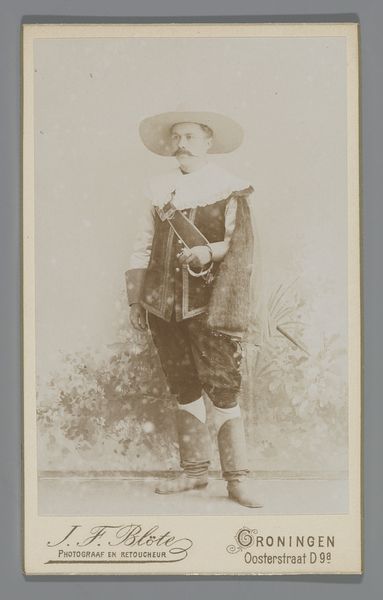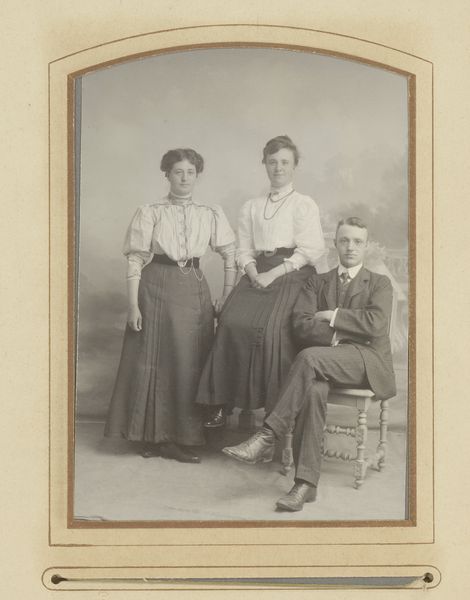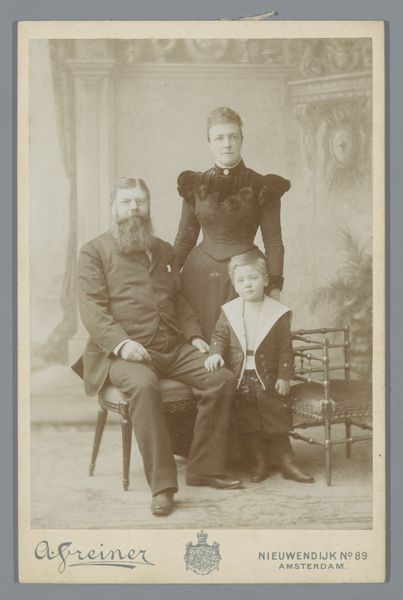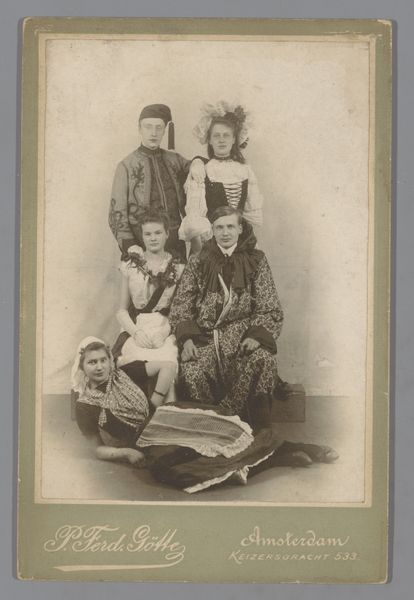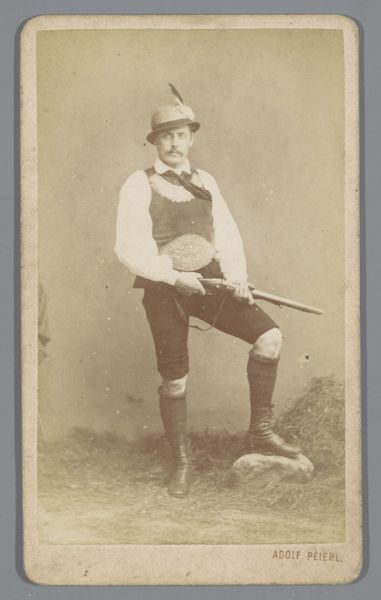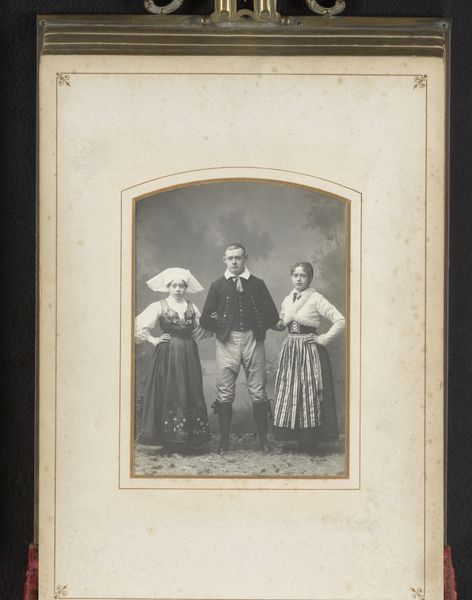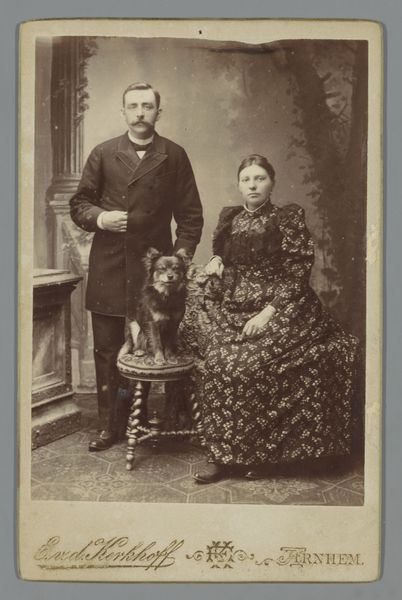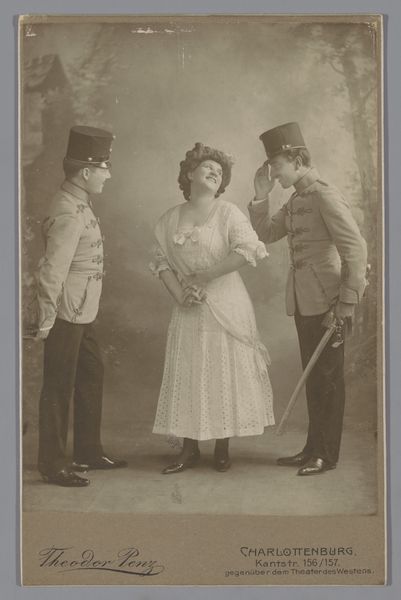
Groepsportret van twee mannen en een vrouw in Tiroler klederdracht Possibly 1906 - 1925
0:00
0:00
Dimensions: height 151 mm, width 105 mm
Copyright: Rijks Museum: Open Domain
Editor: This is "Groepsportret van twee mannen en een vrouw in Tiroler klederdracht" or "Group portrait of two men and a woman in Tyrolean traditional costume" by August Wilcke, possibly from around 1906 to 1925. It's a sepia photograph, and there's a formality to it that strikes me, but I'm curious about its purpose. What story do you think this image tells? Curator: That's a great starting point. The formal pose does hint at something more than just a casual snapshot. We need to consider the social context: the early 20th century witnessed a rise in nationalism and regional identity. Photographs like this, showcasing traditional clothing, were often commissioned or created to reinforce cultural identity, specifically connecting the sitters to the Tyrol region through dress. Does this image depict reality or a performed ideal? Editor: A performed ideal - that's interesting. So you're suggesting this might be less about everyday life and more about constructing an image of "Tyrolean-ness" for a wider audience, or maybe even for themselves? Curator: Precisely. The staged backdrop with the mountains contributes to this constructed identity. Think about who is consuming these images: Were they meant for family albums, postcards for tourists, or perhaps even propaganda? And what power dynamics are at play when photographing people who identify closely with that area or its traditions? Editor: That makes me look at their clothes differently. Are you suggesting that there are more than just aesthetic considerations behind their specific sartorial choices? Curator: Exactly. The details - the embroidery, the specific cut of the Lederhosen, the feathers in the hats – all carry symbolic weight. We need to analyze the visual language here, understanding that the choice of attire may reflect specific socio-economic status and cultural aspirations within their community, which speaks to the construction of cultural image-making and tourism's impacts on the area and community values. Editor: This makes me want to do further research. Thank you! Curator: Agreed! I also appreciate how this photograph reflects the interplay between image-making, identity construction, and the shaping of perceptions around regional cultures.
Comments
No comments
Be the first to comment and join the conversation on the ultimate creative platform.
